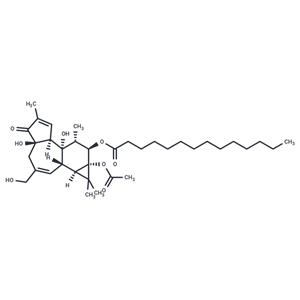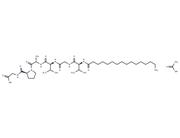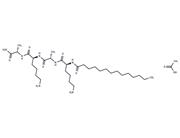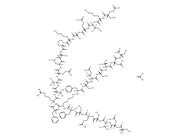| Name | Phorbol 12-myristate 13-acetate |
| Description | Phorbol 12-myristate 13-acetate (PMA) is a natural phorbol ester that acts as an activator of PKC, SphK, and NF-κB, and is commonly used to induce differentiation of THP-1 cells and establish dermatitis models. |
| Cell Research | αT3-1 and LβT-2 cells are grown in monolayer cultured in DMEM in humidified incubator 5% CO2 at 37°C. Serum starvation is with 0.1% FCS in the same medium for 16 h. GnRH and PMA are then added for the length of time as indicated. In general, αT3-1 cells are transiently transfected by ExGen 500 or by jetPRIME, while LβT2 cells only by jetPRIME transfection reagent. For experiments with dominant-negative (DN) PKCs, αT3-1 cells (in 6 cm plates) are transfected with 1.5 μg of p38α-GFP with 3 μg of control vector, pCDNA3, or with 3 μg of the DN-PKCs constructs. For LβT2 cells, transfections are performed (in 10 cm plates) with 4 μg of p38α-GFP along with 9 μg of control vector, pCDNA3, or with 9 μg of the DN-PKCs constructs. Approximately 30 h after transfection, the cells are serum-starved (0.1% FCS) for 16 h and later stimulated with GnRH or PMA, washed twice with ice-cold PBS, treated with the lysis buffer, followed by one freeze-thaw cycle. Cells are harvested; following centrifugation (15,000×g, 15 min, 4°C) supernatants are taken for immunoprecipitation experiments [2]. |
| Animal Research | All experiments are performed with male Wistar rats (weighing 250-280 g). One hundred and thirty-five Wistar rats are randomly divided into seven groups. (1) Rats in the sham group (n=21) are given a lateral cerebral ventricle injection of 0.9% normal saline; (2) Rats in the IR group (n=21) are given a lateral cerebral ventricle injection of 0.9% normal saline 30 min before middle cerebral artery occlusion (MCAO); (3) Rats in the Carbenoxolone (CBX) group (n=21) are given a lateral cerebral ventricle injection of CBX (5 μg/mL×10 μL) 30 min before MCAO; (4) Rats in the Sch-6783 group (n=21) are given a lateral cerebral ventricle injection of DZX (2 mM×30 μL) 30 min prior to MCAO; (5) Rats in the 5-HD group (n=21) are given a lateral cerebral ventricle injection of 5-HD (100 mM×10 μL), and after 10 min, DZX is injected 15 min prior to MCAO; (6) The rats in the DZX + Ro group (n=15) are given a lateral cerebral ventricle injection of DZX, and after 10 min, Ro-31-8425 (400 μg/kg) is injected 15 min prior to MCAO; (7) The rats in the 5-HD+PMA group (n=15) are given an intraperitoneal injection of PMA (200 μg/kg) after the injection of 5-HD and DZX [3]. |
| In vitro | METHODS: Sphere-cultured human melanoma cells WM series were treated with Phorbol 12-myristate 13-acetate (50 ng/mL) for 3 days, and cell growth was examined using the MTS.
RESULTS: Phorbol 12-myristate 13-acetate promoted the proliferation of melanoma cells, and the cell number of WM35 cells increased to 265%. [1]
METHODS: Human mononuclear leukocytes THP-1 were treated with Phorbol 12-myristate 13-acetate (200 ng/mL) for 1-5 days, and morphology was assessed using light microscopy and target expression was detected using Flow Cytometry.
RESULTS: Phorbol 12-myristate 13-acetate induced THP-1 cells to differentiate into macrophage-like cells (THP-1 macrophages). Cell surface expression of CD11 and CD14 was increased. [2]
METHODS: Human venous endothelial cells HUVECs were treated with Phorbol 12-myristate 13-acetate (10-40 ng/mL) for 8 h. Cell migration was detected using the Wound healing migration assay.
RESULTS: Short-term treatment with Phorbol 12-myristate 13-acetate enhanced endothelial cell migration. [3] |
| In vivo | METHODS: To investigate the effects of phorbol esters on rodent brain development, Phorbol 12-myristate 13-acetate (100-500 μg/kg) was administered as a single intraperitoneal injection to neonatal rats and mice deficient in IL-18 or IRAK-4, and the animals were necropsied 24 h, 7 days, or 14 days later.
RESULTS: Phorbol 12-myristate 13-acetate induced an inflammatory response and extensive neurodegeneration in the brain. Lack of IL-18 or IRAK-4 protected against Phorbol 12-myristate 13-acetate-induced brain damage. [4]
METHODS: To construct an acute mouse ear inflammation model, both ears of CD-1 mice were treated topically with Phorbol 12-myristate 13-acetate (20 μL of 125 μg/mL PMA acetone solution), air-dried and completely absorbed.
RESULTS: Ear tissues attacked with Phorbol 12-myristate 13-acetate began to show signs of inflammation, including swelling and redness, approximately 2 hours after application. [5] |
| Storage | keep away from direct sunlight,store under nitrogen,store at low temperature,keep away from moisture | Powder: -20°C for 3 years | In solvent: -80°C for 1 year | Shipping with blue ice/Shipping at ambient temperature. |
| Solubility Information | DMSO : 60 mg/mL (97.27 mM), Sonication is recommended.
H2O : Insoluble
10% DMSO+40% PEG300+5% Tween 80+45% Saline : 6 mg/mL (9.73 mM), Solution.
|
| Keywords | TPA | SphK | Sphingosine kinase | S1PReceptor | S1P Receptor | Protein kinase C | PKC | Phorbol myristate | Phorbol 12-myristate 13-acetate | Phorbol 12myristate 13acetate | Phorbol 12-myristate | Phorbol 12 myristate 13 acetate | Nuclear factor-κB | Nuclear factor-kappaB | NF-κB | NFκB | NF-kB | NFkB | Inhibitor | inhibit |
| Inhibitors Related | Naringin dihydrochalcone | α-Vitamin E | Lidocaine | Diethylmaleate | Glucosamine | sodium lauroyl-α-hydroxyethyl sulfonate | Lidocaine hydrochloride | N,N-Dimethylacetamide | 5-Aminosalicylic Acid | Indole-3-carbinol | Diallyl disulfide | Sodium salicylate |
| Related Compound Libraries | Anti-Tumor Natural Product Library | Bioactive Compound Library | Membrane Protein-targeted Compound Library | Selected Plant-Sourced Compound Library | Natural Product Library | Neuroprotective Compound Library | Natural Product Library for HTS | Immunology/Inflammation Compound Library | Anti-Aging Compound Library | Bioactive Compounds Library Max | GPCR Compound Library | TGF-beta/Smad Compound Library |
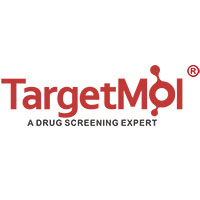
 United States
United States



